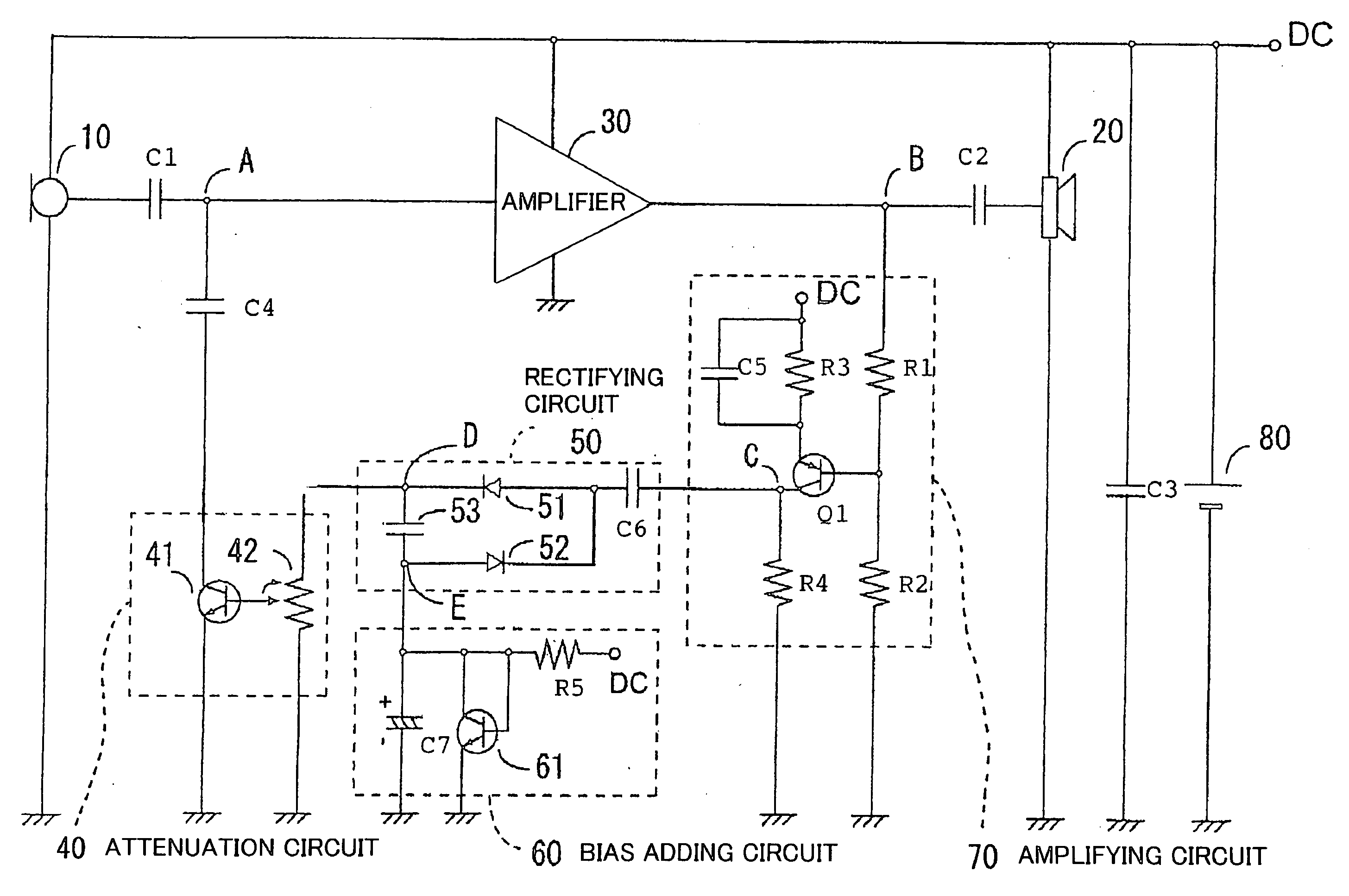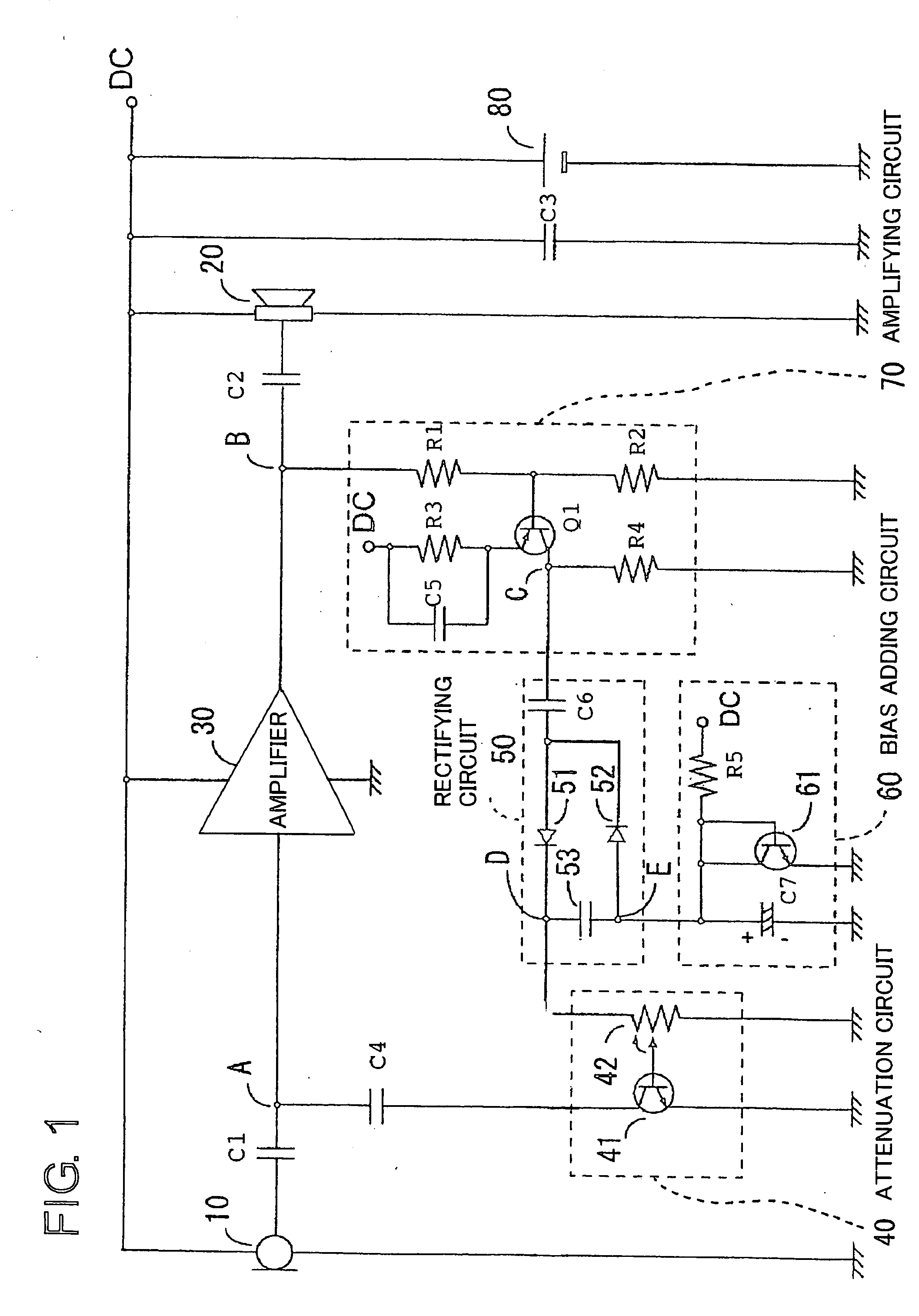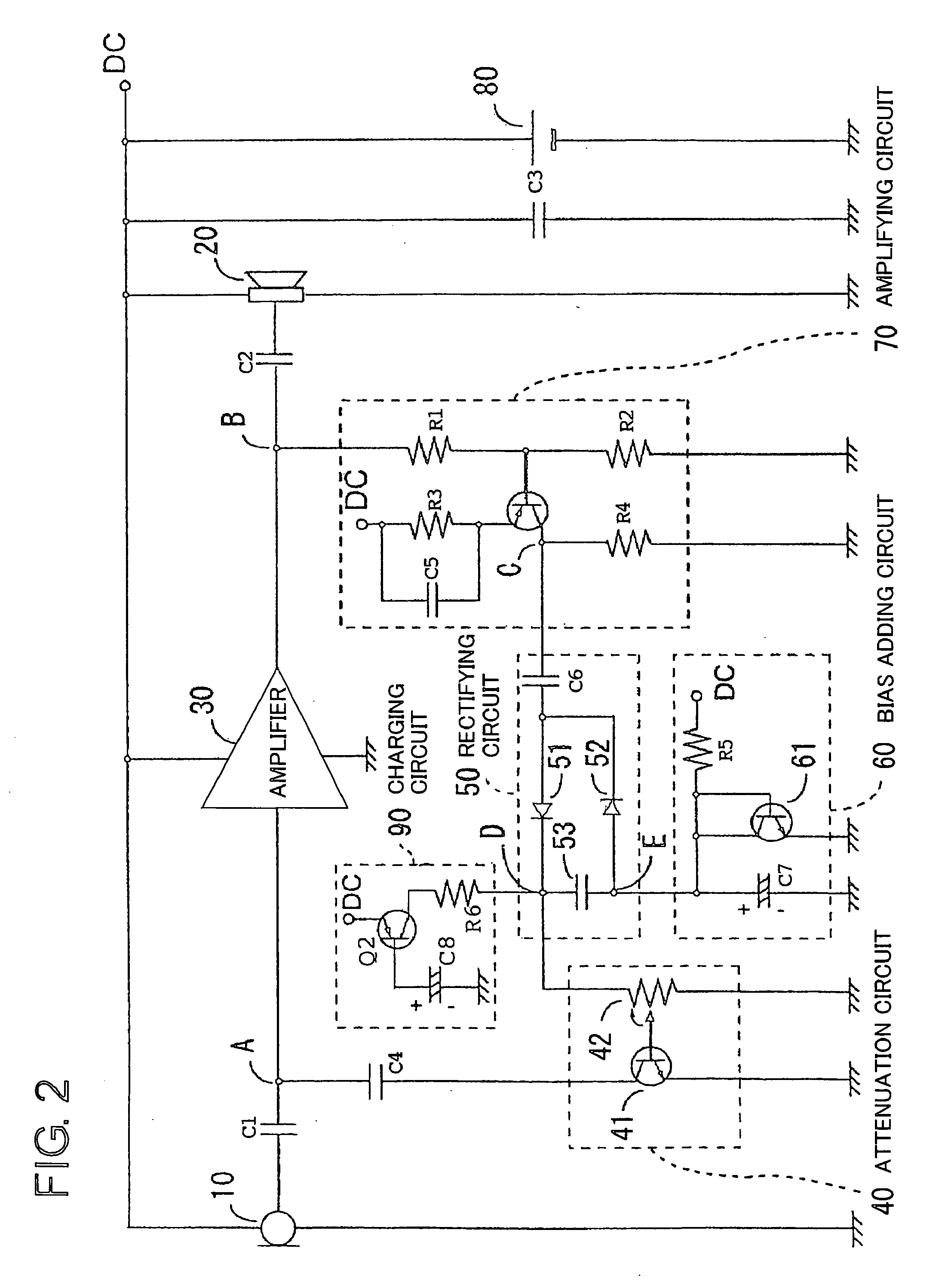Hearing aid
a technology of hearing aids and auxiliary devices, applied in the field of hearing aids, can solve the problems of harmonic distortion, output level must be suppressed, and user discomfort, and achieve the effect of reducing attack time and release tim
- Summary
- Abstract
- Description
- Claims
- Application Information
AI Technical Summary
Benefits of technology
Problems solved by technology
Method used
Image
Examples
1st embodiment
[1st Embodiment]
[0019] Description will be given below on embodiments of the present invention referring to the attached drawings. FIG. 1 is a circuit diagram showing an arrangement of a hearing aid in a first embodiment of the present invention. In FIG. 1, an impulse-like input signal such as excessive sound or voice or impact sound inputted through a microphone 10, i.e. an input transducer, is applied to an amplifier 30 via a capacitor C1. Then, the sound is amplified with a certain fixed gain and is outputted to an earphone 20, i.e. a receiver with a class D amplifier, via a capacitor C2. DC power is supplied to the microphone 10, the amplifier 30, and the earphone 20 via a battery 80 (and a capacitor C3). An output signal (a connection point B) of the amplifier 30 is monitored by an amplifying circuit 70 and a rectifying circuit 50, and an input signal (a connection point A) of the amplifier 30 is attenuated by a bias adding circuit 60 and an attenuation circuit 40 so that the o...
2nd embodiment
[2nd Embodiment]
[0027]FIG. 2 is a circuit diagram showing an arrangement of a hearing aid in a second embodiment of the present invention. In the second embodiment, in contrast to the first embodiment, a charging circuit 90 (to be operated only when a power source 80 of the hearing aid is turned on) is added as shown in FIG. 2. The other arrangement is the same as that of the first embodiment, and detailed description is not given here. At the charging circuit 90, DC power is applied on the emitter of the transistor Q2. The base is grounded via the capacitor C8. Collector is connected to the connection point D, i.e. one end of the smoothing capacitor 53, via the resistance R6.
[0028] Now, description will be given on operation of the hearing aid with the arrangement as described above, referring to FIG. 2. In case of a circuit, which has no charging circuit 90, when the power 80 of the hearing aid is turned on with the automatic gain control function in operating status, pulsating c...
PUM
 Login to View More
Login to View More Abstract
Description
Claims
Application Information
 Login to View More
Login to View More - R&D
- Intellectual Property
- Life Sciences
- Materials
- Tech Scout
- Unparalleled Data Quality
- Higher Quality Content
- 60% Fewer Hallucinations
Browse by: Latest US Patents, China's latest patents, Technical Efficacy Thesaurus, Application Domain, Technology Topic, Popular Technical Reports.
© 2025 PatSnap. All rights reserved.Legal|Privacy policy|Modern Slavery Act Transparency Statement|Sitemap|About US| Contact US: help@patsnap.com



